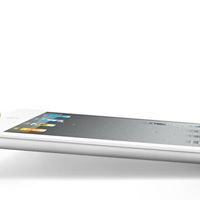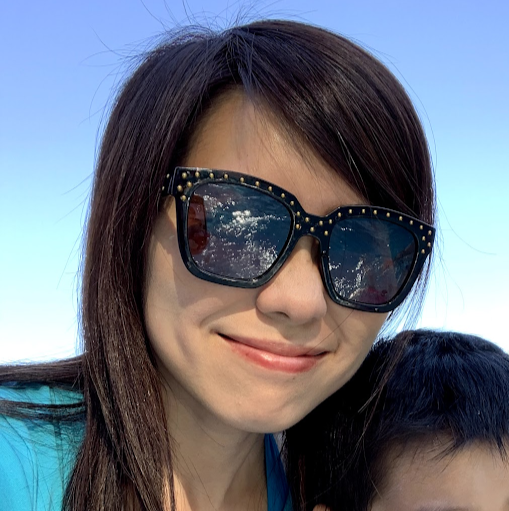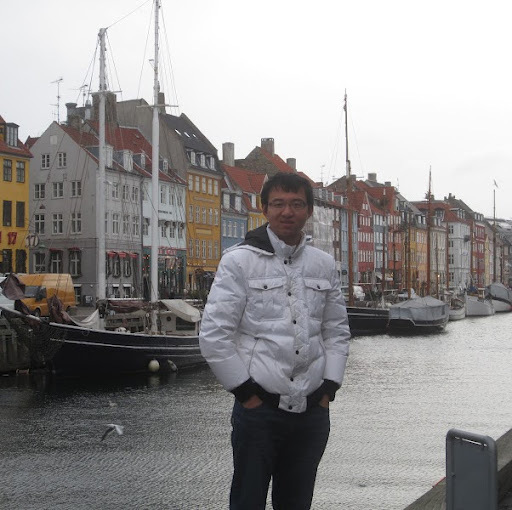Yang Zheng
age ~44
from Castro Valley, CA
- Also known as:
-
- Zhen G Yang
Yang Zheng Phones & Addresses
- Castro Valley, CA
- Fremont, CA
- Pittsburgh, PA
- South San Francisco, CA
- New York, NY
- 197 Shaniko Cmn, Fremont, CA 94539 • (510)2260720
Us Patents
-
Computer Aided Detection Workflow And User Interface
view source -
US Patent:20050123185, Jun 9, 2005
-
Filed:Nov 18, 2004
-
Appl. No.:10/992042
-
Inventors:Ram Balasubramanian - Palo Alto CA, US
Yang Zheng - San Jose CA, US -
International Classification:G06K009/00
-
US Classification:382132000, 382128000
-
Abstract:A method and a system for a workflow and user interfaces for an automated detection system. A user interface method for a computer aided detection system includes a plurality of steps, including: (a) accessing an image case, the image case comprising one or more digital images; (b) identifying a view orientation for each of the one or more digital images; (c) transmitting the image case to an algorithm server for processing of each of the one or more digital images to generate a computer aided detection report for the image case; (d) providing a report system adapted to organize a plurality of computer aided detection reports wherein each of the computer aided detection reports are selectable by an operator for viewing; (e) automatically transmitting the computer aided detection report to the report system; (f) allowing the operator to select the computer aided detection report for viewing; and (g) displaying the selected computer aided detection report on the display.
-
Automatic Image Contrast In Computer Aided Diagnosis
view source -
US Patent:20060110022, May 25, 2006
-
Filed:Nov 22, 2005
-
Appl. No.:11/285231
-
Inventors:Daoxian Zhang - Los Gatos CA, US
Yang Zheng - San Jose CA, US -
International Classification:G06K 9/00
-
US Classification:382132000, 382169000, 382274000
-
Abstract:A method for adjusting contrast level for displaying an image, particularly for computed aided diagnosis. The method includes the steps of: masking one or more portions of the image to obtain a cropped image; forming a histogram of pixel intensity values from the cropped image using a plurality of bins, each bin having a predetermined bin width; designating one or more bins as image background bins and mapping pixels in the image background bins to a display background value; designating bins for upper and lower bound values and mapping tissue bins, having values between upper and lower bound values, to tissue display values, forming a contrast-adjusted image thereby; assigning pixels along the contour of the cropped image to one or more skin line bins; mapping pixels in the one or more skin line bins to an enhanced pixel value in the contrast-adjusted image; and displaying the contrast-adjusted image.
-
Texture Analysis For Mammography Computer Aided Diagnosis
view source -
US Patent:20080031506, Feb 7, 2008
-
Filed:Aug 7, 2006
-
Appl. No.:11/500183
-
Inventors:Anuradha Agatheeswaran - San Jose CA, US
Daoxian H. Zhang - Los Gatos CA, US
Yang Zheng - San Jose CA, US -
International Classification:G06K 9/00
-
US Classification:382132
-
Abstract:A method of characterizing a mass within a digital mammogram. A region of interest is identified that includes the mass and surrounding tissue. A border outline of the mass is identified. A rectangular image is formed wherein each column of the image is formed by repetition of steps. A vector is employed for each of a set of ray angles, wherein the vector extends from a central point of the mass and intersects the border outline at an intersection point. A starting pixel along the vector is identified, between the intersection point and the central point, at a first distance before the intersection point. An ending pixel along the vector is identified at a second distance beyond the intersection point. Pixels along the vector, from the starting pixel to the ending pixel, are remapped as the respective column in the rectangular image. Texture features are extracted from the formed rectangular image.
-
Method For Making Photochromic Contact Lenses
view source -
US Patent:20220339895, Oct 27, 2022
-
Filed:Mar 31, 2022
-
Appl. No.:17/710248
-
Inventors:- Fribourg, CH
Junhao Ge - Redwood City CA, US
Steve Yun Zhang - Sugar Hill GA, US
Michelle Plavnik - Atlanta GA, US
Yang Zheng - Alpharetta GA, US
Jing Cheng - Brea CA, US
Augustine Twum Kumi - Grayson GA, US -
International Classification:B29D 11/00
C08L 83/14
G02C 7/04
G02C 7/10 -
Abstract:Described herein is a method for producing a contact lens comprising a central photochromic zone that has a diameter of about 13 mm or less and is concentric with the central axis of the contact lens. The method comprises: applying, in the center of the molding surface of a male mold half, a drop (having a volume of about 5 μL or less) of a first polymerizable fluid composition containing at least one photochromic compound and a relatively-high molecular weight polysiloxane vinylic crosslinker for increasing the viscosity and adhesion on the molding surface of the male mold half; dosing a second polymerizable fluid composition in a female mold hald; closing the female mold hald with the male mold half with the drop thereon to form a molding assembly; and curing the second polymerizable fluid composition and the drop of the first polymerizable fluid composition in the molding assembly.
-
Method For Making Embedded Hydrogel Contact Lenses
view source -
US Patent:20220326412, Oct 13, 2022
-
Filed:Mar 31, 2022
-
Appl. No.:17/710224
-
Inventors:- Fribourg, CH
Junhao Ge - Redwood City CA, US
Ying Pi - Suwanee GA, US
Cornelius Daniel Niculas - Suwanee GA, US
Yang Zheng - Alpharetta GA, US
Steve Yun Zhang - Sugar Hill GA, US
Michelle Plavnik - Atlanta GA, US
Ethan Leveillee - Atlanta GA, US
Jing Cheng - Brea CA, US
Augustine Twum Kumi - Grayson GA, US -
International Classification:G02B 1/04
C08G 77/442
B29D 11/00
G02C 7/04 -
Abstract:The invention is directed to an embedded hydrogel contact lens, which comprises an insert sandwiched between two layers of hydrogel materials and can be produced according to a cast molding method including the procedures involving two females halves (FC and FC) and two male halves (BC and BC) and three consequential molding steps involving three molding assemblies: the 1st one formed between FC and BC for molding an insert; the 2one formed between FC and BC for molding a lens precursor having the molded insert embedded in a layer of a hydrogel material in a way that the front surface of the molded insert merges with the convex surface of the lens precursor; and the 3rd one formed between FC and BC for molding an embedded hydrogel contact of the invention.
Resumes

Yang Zheng
view source
Yang Zheng
view source
Scientist At Ucla
view sourcePosition:
Scientist at UCLA
Location:
United States
Industry:
Consumer Goods
Work:
UCLA
Scientist
Scientist
Education:
Ph.D
Name / Title
Company / Classification
Phones & Addresses
President
Inno Inc
Nonclassifiable Establishments
Nonclassifiable Establishments
39120 Argonaut Way, Fremont, CA 94538
39800 Fremont Blvd, Fremont, CA 94538
39800 Fremont Blvd, Fremont, CA 94538
Myspace

Yang Zheng Low
view source
Yang Zheng Dao
view source
Yang Kang Zheng
view source
Yang Chong Zheng
view source
Yang Zheng Jie
view source
Yang Hao Zheng
view source
Yang Zheng
view source
Soh Zheng Yang
view sourcePlaxo

Zheng Yang
view sourcePittsburgh, PA

Zheng Yang
view sourcePrinciple Scientist at GlaxoSmithKline
Googleplus

Yang Zheng
Work:
Baidu
Education:
National University of Singapore - Computing

Yang Zheng
Education:
RUC

Yang Zheng (Zy)

Yang Zheng

Yang Zheng
Tagline:
For He is at my right hand that I may not be shaken

Yang Zheng

Yang Zheng

Yang Zheng
Youtube
Get Report for Yang Zheng from Castro Valley, CA, age ~44





![[World Championship 2010 XD FINAL] Zheng Bo/Ma Jin... [World Championship 2010 XD FINAL] Zheng Bo/Ma Jin...](https://i.ytimg.com/vi/HDbTRXqNUa0/0.jpg)